Juan Diego Escobar Alzate’s Luz: The Flower of Evil (2019)

I’ve never been religious. It wasn’t a part of my upbringing, except of course for the ubiquitous presence of religion which runs through western society. Not being immersed in any kind of formal belief, religion has always seemed inexplicable to me – its stories and premises are baffling, incoherent and ridiculous when viewed literally by believers (evangelical Christianity in North America has all the appearance of a deep psychological derangement), but even as metaphor and symbolic moral lessons, religion adds nothing to a rational humanist view of the shared community we are all inextricably bound up in.
In the village where I was born in southeast England, although the population was only a few hundred, we had an Anglican church with a square Norman tower and an atmospheric graveyard whose headstones were weathered and lichen-encrusted, and just up the road what we called Chapel (I have no idea what the doctrinal differences really were, but the Baptists at chapel seemed more judgmental than the Anglican traditionalists). When I was perhaps about six, I went to Sunday school at chapel a few times because some of my friends went. I don’t remember any lessons, but I do recall the horrified reaction of the Sunday school teacher when she learned that I hadn’t been baptized or christened. I was very young, but aware enough to realize that being told I would go to Hell meant that this was definitely not a place I wanted to be.
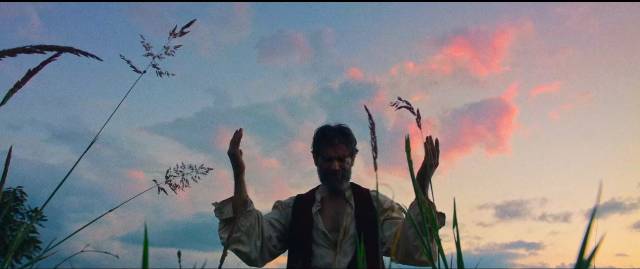
When we emigrated to Canada and settled in Newfoundland, all the schools were run by various churches. This meant that there more schools than necessary in our area and none except the big Catholic schools were adequately funded. In my United Church school I had to sit through what were called divinity classes, the text being an anthology of Bible passages supposedly illustrating important lessons. I eventually got excused from this religious instruction, but since there was nowhere else to go, I still had to sit in the classroom doing other work or reading a book as everyone else had to pay attention.
None of these experiences shifted my skepticism about religion, and as I’ve grown much older, it’s all come to seem even more ridiculous to me. More than ridiculous, as those who cling to religious beliefs have obviously caused, and continue to cause, enormous harm to the society we have to share. No matter how disbelieving one might be, the effects of religion can’t be avoided, so examining the underlying psychology of belief through literature and cinema has a useful anthropological aspect, even if I remain an outsider looking in with only limited comprehension.
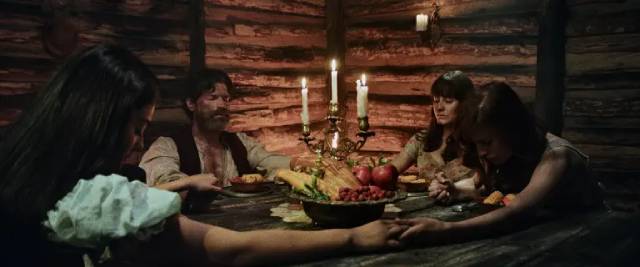
All of which is to say that when I watch a movie which centres on religious belief, I’m probably missing certain nuances simply because I don’t hold, and never have held, such beliefs myself. Although steeped in Christian iconography and attitudes, a film like Juan Diego Escobar Alzate’s Luz: The Flower of Evil (2019) plays for me as folk horror. I can’t really tell whether the filmmaker intends to convey something positive about religion (the final images suggest that he does), but the presentation of religious belief here seems unequivocally monstrous and destructive. And from that point of view, it’s a fascinating and powerful piece of work, all the more remarkable for being Escobar Alzate’s first feature.
Filmed in a remote area of Colombia, a location with breathtaking landscapes, and seemingly set outside of time – other than a rifle and, crucially, a portable tape player, it could be taking place anywhere in the past few centuries – it tells the story of a small community dominated by a man known as El Señor (Conrado Osorio) who asserts his authority by claiming a direct connection to God. He lives with his three daughters, Uma (Yuri Vargas), Laila (Andrea Esquivel) and Zion (Sharon Guzman) in a homestead on a hillside surrounded by woods and meadows. It’s been a couple of years since the death of his wife Luz and we get the impression that his response to grief has been to sink ever more deeply into a dark religious fundamentalism. Luz, after all, means light and with her death light has left his world.
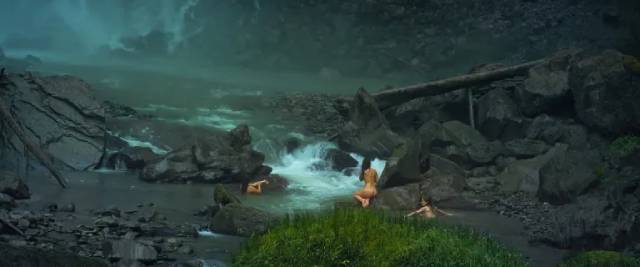
As the film begins, Laila has found the tape recorder in the woods, the tape inside playing melodic classical music. El Señor tells her that anything so beautiful can only come from the devil, so he confiscates the player, but not before she slips the cassette out and hides it from him. Later, as the three daughters prepare to sleep, Uma turns on a music box given to them by their mother and they listen to its tune; Luz had told them that the music came from an angel trapped inside the box – this direct contrast between the father’s dark view of the world and the mother’s bright view forms the tension within which the three young women are suspended. Their mother was buried on a hilltop beside a dead tree and they wait for it to come back to life, resurrected by the spiritual energy of Luz. Meanwhile, their father’s increasing fanaticism makes their world darker.
El Señor has a disturbing way of trying to connect with God; he takes young boys whom he claims are Jesus reborn and chains them in a pen outside the cabin. Each boy has eventually died (from cold and starvation), but he insists that each new one is Christ, who will transform this community’s world. The latest boy (Johan Camacho) is sullen and silent, kneeling on straw, a chain around his neck binding him. He watched as his mother pleaded with El Señor to release him, watched as El Señor beat her and finally raped her to make her go away. The patriarchal authority he has exerted up to this point now descends to its basest, most brutal level.
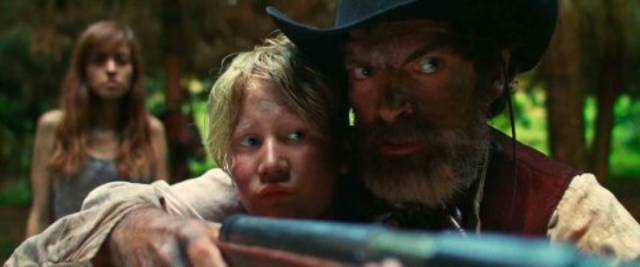
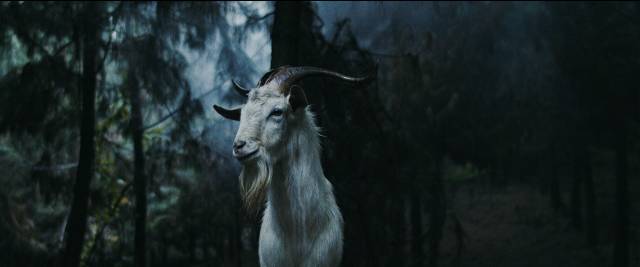
The more fiercely El Señor clings to his vision of religion, the more doubt he sows not only among his daughters but throughout the community. The harsh division of his worldview between God and Devil, darkness and light, spirit and flesh is gradually revealed as untenable. He tries to deny the physicality of his own daughters, asserting their spiritual purity, only to discover (in the film’s most horrifying scene) that Uma is very much a creature of flesh and corporeal desire. In the absence of light, a fundamental belief in Christianity leads deeper into violence and darkness. This is a Manichean view of the world dressed in Christian robes, the latter disintegrating under the influence of the former before the final suggestion that a balance between darkness and light might just possibly be re-established.
The duality inherent in both world views is manipulated by El Señor to justify his own power and control over his family and the community, but it is apparent from the start that it isn’t viable; required by his beliefs to be “pure” if not completely angelic, his three daughters are all too human, beings of flesh with desires, fears and appetites. Similarly, the imprisoned boy can in no way embody the God made flesh which El Señor requires to maintain his authority. As the impossible nature of the world he tries to make in his own image becomes all too clear, violence escalates. There is no God in this world, just a man using the fiction of a God to exert his own increasingly warped power over others. Religion here is a source of oppression and horror, not enlightenment and understanding, a construction in support of a monstrous masculinity devoid of empathy, carrying within it the inevitability of its own destruction.
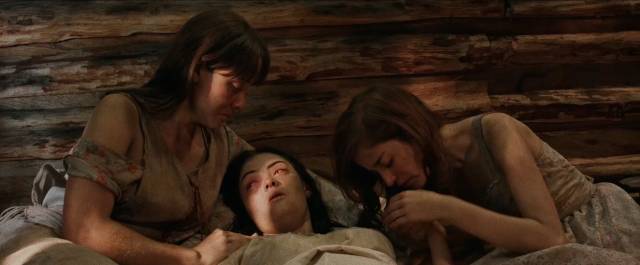
Escobar Alzate gives the film a mythic quality which draws on memories of other movies (the opening shots and the use of landscape are reminiscent of elegiac westerns). The image has been manipulated to heighten colour and create a painterly quality (I am reminded of the chapter breaks in Lars Von Trier’s Breaking the Waves [1996]), while stately camera movements and the use of voice over recall the lyrical work of Terrence Malick. But while such influences are openly displayed, Escobar Alzate pulls them together with a clear sense of control and obvious confidence in his handling of the material, all firmly anchored by the strong performances which give the visual symbolism a grounded, visceral sense of realism.
The collector’s edition from Fractured Visions, which I tracked down after watching the company’s other two releases, looks terrific and includes a CD of Brian Heater’s score along with several supplements. I admit that I found two hour-long programs – a making-of and an account of the film’s presentation at the Sitges festival – unwatchable; for some reason they were shot on an old VHS camcorder and the image and sound quality is terrible. I have no idea what the justification for this decision might have been, when far better quality could have been achieved with a cellphone camera. Much better is Escobar Alzate’s earlier short film The Colors of Hope and Wonder (2016), which manages to make something moving out of a young boy’s fear of clowns and a sad clown’s determination to kill himself, a chance encounter between the two transforming both. The short uses the same image technique as Luz, giving the story a similarly mythic quality.
There’s also a commentary with Escobar Alzate in conversation with film writer Kurt Halfyard, which I haven’t listened to yet.
Comments